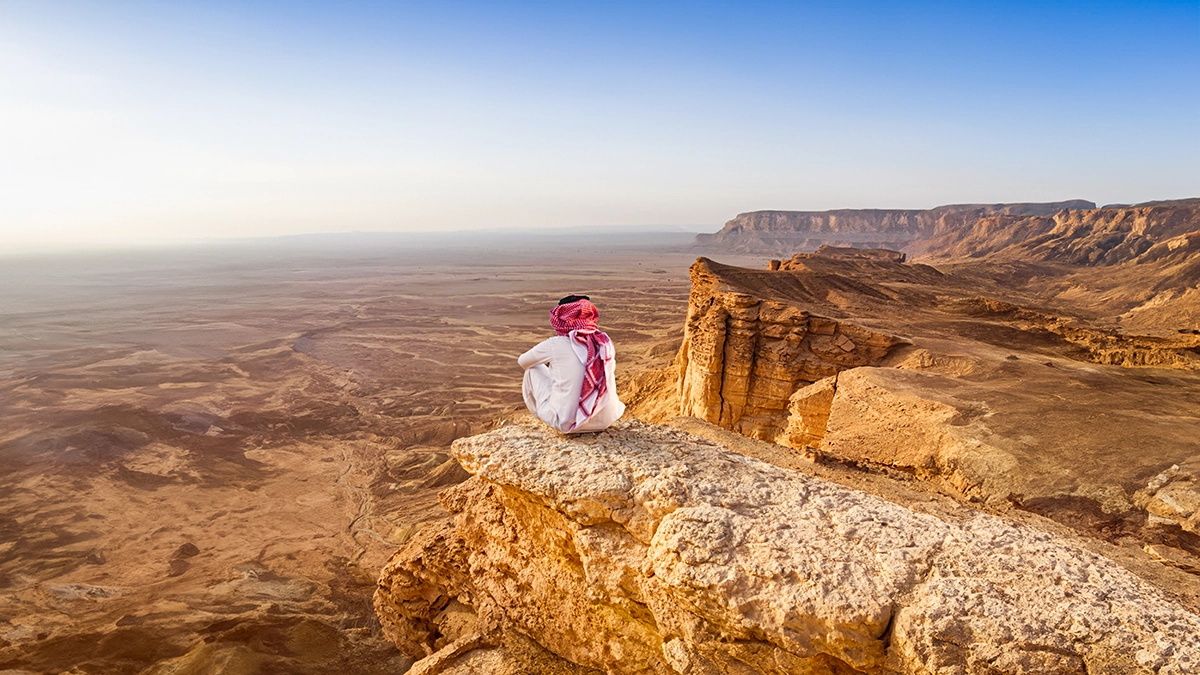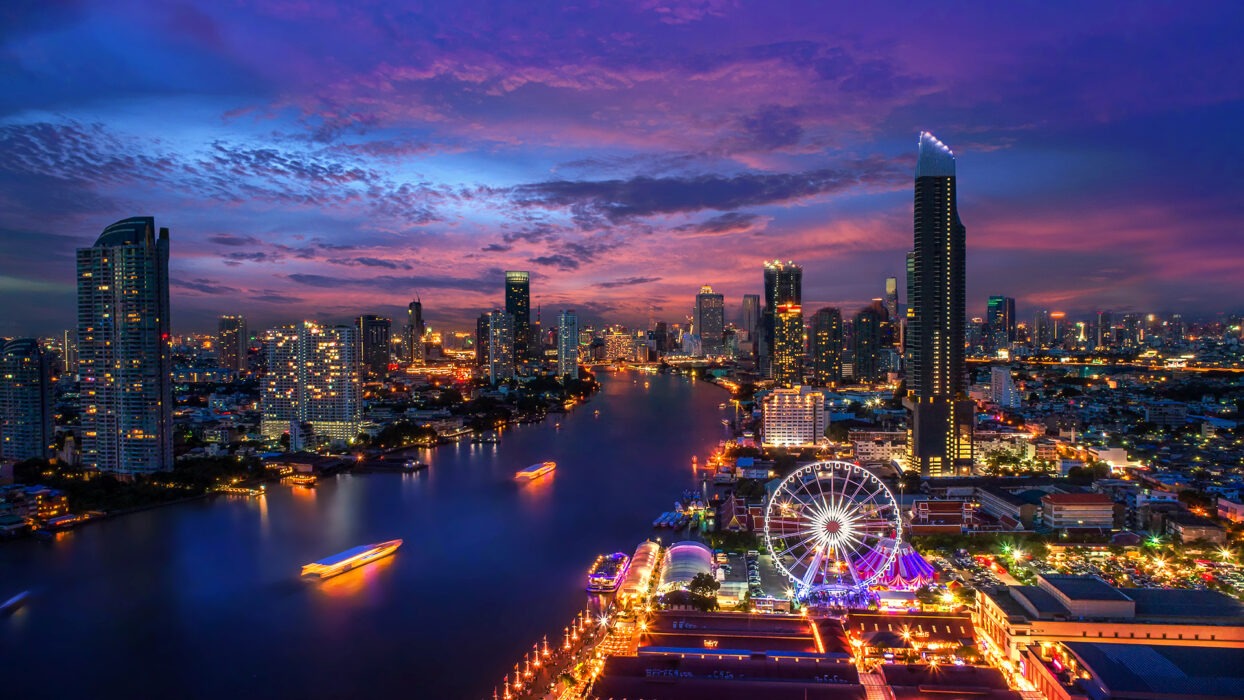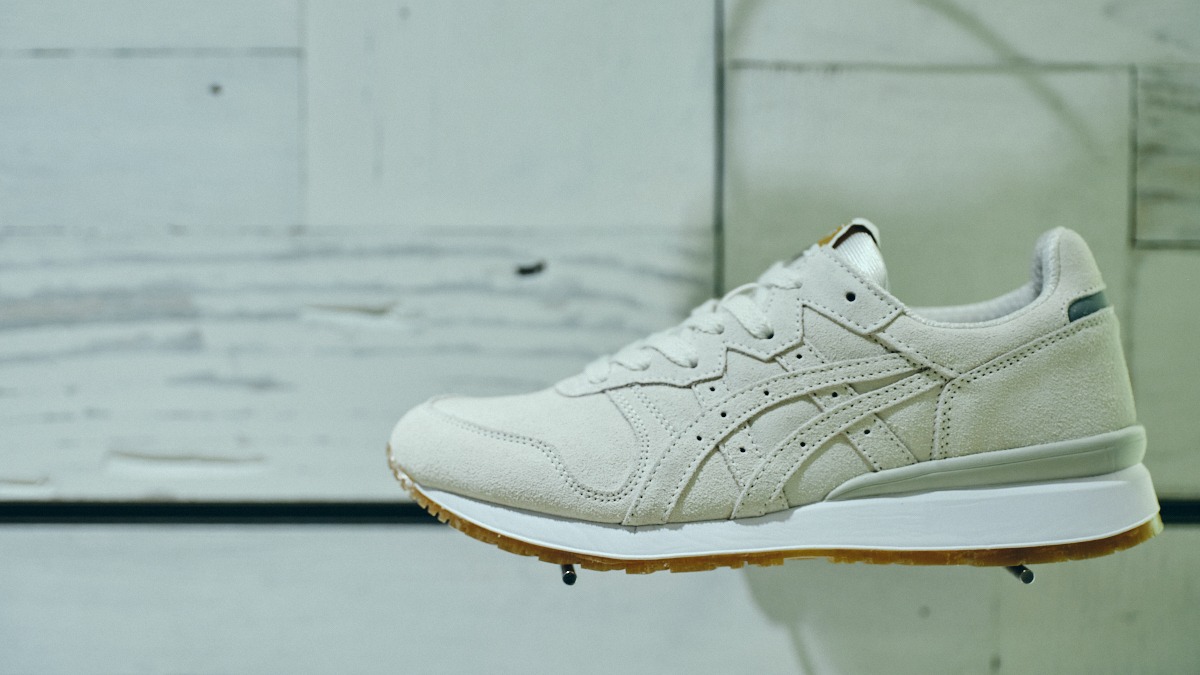Discover Wat Ratchanatdaram: A Hidden Gem in Bangkok
If you think you’ve seen all that Bangkok has to offer, think again! Nestled amid the bustling streets and vibrant markets lies Wat Ratchanatdaram, a lesser-known cultural gem that deserves a spot on your must-visit list. Often overshadowed by more famous temples like Wat Phra Kaew and Wat Pho, this stunning temple complex boasts unique architectural features and a rich history that make it a fascinating stop for travelers seeking to explore Bangkok’s cultural attractions.
Wat Ratchanatdaram, also known as Wat Ratchanatdaram Worawihan, is not just another temple; it’s a treasure trove of history and artistry. With its striking Loha Prasat—a multi-tiered structure adorned with 37 spires—this temple is a testament to the creativity and dedication of its creators. If you’re looking for hidden gems in Bangkok that offer a more authentic experience away from the tourist crowds, this is the place to be!
Unveiling the Charm of Wat Ratchanatdaram
Located in the heart of Bangkok, just a stone’s throw from the bustling Khao San Road, Wat Ratchanatdaram is easily accessible yet remains one of the city’s hidden cultural sites. Its location makes it a perfect pitstop for those exploring Bangkok’s heritage, as it is conveniently situated near other historical landmarks.
What sets Wat Ratchanatdaram apart from other temples is its unique architectural style. The Loha Prasat, which translates to “Metal Castle,” is the only one of its kind in the world, making it a must-see for architecture enthusiasts. This temple is a delightful blend of intricate details and serene surroundings, providing a peaceful escape from the city’s hustle and bustle.
As you wander through the temple grounds, you’ll notice its peaceful atmosphere, often accompanied by the soft chants of monks and the gentle rustle of leaves. This tranquil setting allows visitors to immerse themselves in the spiritual essence of the place, making it a perfect spot for reflection and appreciation of Bangkok’s rich cultural tapestry.
While many tourists flock to the well-known temples, Wat Ratchanatdaram offers an intimate glimpse into Thailand’s spiritual heritage without the large crowds. It’s a hidden gem that invites you to explore its beauty at your own pace.
The Fascinating History of Wat Ratchanatdaram
Constructed during the reign of King Rama III in the 19th century, Wat Ratchanatdaram is steeped in history and cultural significance. The temple was built as a dedication to the Lord Buddha and is a reflection of the architectural brilliance of its time. It showcases the traditional Thai style infused with influences from Western designs, which were becoming popular during that era.
One of the most intriguing aspects of the temple’s history is its connection to the royal family. Legend has it that King Rama III was inspired by the Loha Prasat in India, which led to the creation of this architectural marvel. The temple not only serves as a place of worship but also as a symbol of the king’s devotion to Buddhism and his desire to promote religious practices among his people.
As you explore the temple, keep an eye out for the intricate details that tell stories of the past. From the beautifully crafted statues to the ornate decorations, each element reflects the rich history and artistry that went into its creation. This is more than just a temple; it’s a living piece of Bangkok’s cultural heritage.
Did you know that Wat Ratchanatdaram was once a center for learning? In the past, it served as a place where monks would educate young boys in the teachings of Buddhism, making it a vital part of the community. Today, it continues to play an essential role in the lives of local residents, who come to the temple for daily rituals and spiritual guidance.
Architectural Marvel: Unpacking the Design of Loha Prasat
The Loha Prasat is undoubtedly the highlight of Wat Ratchanatdaram, and for good reason! This architectural wonder stands tall with its 37 spires, symbolizing the 37 virtues toward enlightenment in Buddhism. The structure is a harmonious blend of intricate designs and symbolic meaning, making it a true marvel to behold.
As you gaze up at the spires, you can’t help but admire the craftsmanship that went into creating such a unique design. Unlike the more traditional temple structures found throughout Bangkok, the Loha Prasat stands out with its metallic finish and tiered layout. The combination of gold and silver elements creates a stunning visual effect, especially during sunrise and sunset when the light dances off its surfaces.
For those who appreciate architectural details, the temple’s design offers a wealth of inspiration. The intricate carvings and decorations reflect the skill and dedication of the artisans who worked on the temple, showcasing a blend of Thai and Western influences that were emerging during the 19th century. It’s a fantastic opportunity to compare the Loha Prasat to other temples in Bangkok, such as Wat Arun or Wat Pho, each with its own unique style and story.
Whether you’re an architecture aficionado or simply a curious traveler, the Loha Prasat is a sight that will leave you in awe. Don’t forget to bring your camera—this is one of the most photogenic spots in the city!
Practical Visitor Information: Your Guide to Exploring Wat Ratchanatdaram
Planning a visit to Wat Ratchanatdaram? Great choice! This hidden gem is not just a feast for the eyes but also an enriching cultural experience. Here’s everything you need to know to make the most of your visit.
Visiting Hours and Entrance Fees
Wat Ratchanatdaram welcomes visitors daily from 8:00 AM to 5:00 PM. The entrance is free, which makes it an even more appealing stop on your Bangkok adventure. Just remember to check for any special events or ceremonies that might affect visiting hours, as these can occasionally change.
Dress Code
As with many temples in Thailand, dressing appropriately is important. Visitors are expected to wear modest clothing that covers the shoulders and knees. If you happen to forget your shawl or are wearing shorts, don’t worry! There are often rental services nearby where you can grab a sarong to cover up. Just think of it as a fun part of the experience!
Accessibility Options
Wat Ratchanatdaram is relatively accessible for all visitors. The temple grounds are flat, making it easy to navigate for those with mobility challenges. If you have any specific requirements, it’s always a good idea to check in advance or ask a friendly local for assistance.
Tips for Avoiding Crowds
If you want to savor the tranquility of Wat Ratchanatdaram, consider visiting early in the morning or later in the afternoon. These times not only offer cooler temperatures but also allow you to enjoy the temple with fewer tourists around. Plus, the soft morning or golden hour light is perfect for photography!
Transportation Tips: How to Reach Wat Ratchanatdaram
Getting to Wat Ratchanatdaram is a breeze, thanks to Bangkok’s extensive transportation options. Here’s a quick guide to help you choose the best way to reach this stunning temple.
Public Transport
The Bangkok Skytrain (BTS) is a convenient option. You can hop on the BTS to National Stadium Station and then take a short taxi or tuk-tuk ride to the temple. Alternatively, the MRT subway stops at Hua Lamphong Station, which is about a 15-minute walk away.
Tuk-Tuks and Motorbike Taxis
For a more adventurous ride, why not try a tuk-tuk? These colorful vehicles are iconic in Bangkok and can be a fun way to zip through the city. A ride from Khao San Road to Wat Ratchanatdaram typically costs around 50-100 THB. Motorbike taxis are another speedy option, especially if you’re traveling solo. Just be sure to negotiate the fare before hopping on!
Estimated Costs and Travel Times
In terms of costs, public transport is the most budget-friendly option, with fares ranging from 15-60 THB depending on your route. Tuk-tuks and motorbike taxis may be slightly pricier, but the experience is worth it! Expect travel times to vary, but generally, you should budget around 30 minutes from central areas like Khao San Road.
Nearby Attractions: Making the Most of Your Visit
While Wat Ratchanatdaram is a highlight in itself, there are plenty of other attractions nearby that are worth exploring. Here’s a quick list to help you plan your day!
The Golden Mount
Just a short walk away is the stunning Golden Mount (Wat Saket). This temple features a golden chedi that offers panoramic views of the city. The climb is a bit of a workout, but the breathtaking vistas are totally worth it!
Wat Phra Kaew
No trip to Bangkok is complete without a visit to Wat Phra Kaew, the Temple of the Emerald Buddha. It’s located within the Grand Palace complex and is one of Thailand’s most revered sites. Just be prepared for larger crowds here!
Culinary Recommendations
After exploring the temples, treat yourself to some delicious local cuisine. Head over to Thip Samai for what many claim is the best pad thai in Bangkok, or grab a refreshing coconut ice cream from a nearby street vendor. Don’t forget to try some mango sticky rice for dessert—it’s a must!
Cultural Insights: Daily Life and Rituals at Wat Ratchanatdaram
Wat Ratchanatdaram is not just a tourist attraction; it’s a living part of the community. As you wander the temple grounds, take a moment to observe the daily rituals performed by the monks and local worshippers.
The Role of Monks
Monks at Wat Ratchanatdaram engage in various activities, from chanting and meditation to teaching the young monks. If you’re lucky, you might catch a glimpse of a monk giving a sermon or participating in a traditional ceremony. These moments offer a unique insight into the spiritual life of the community.
Community Involvement
This temple plays a vital role in the local community, serving as a gathering place for festivals and events. Many locals come to seek blessings or participate in religious ceremonies, making it a vibrant hub of spiritual activity. If you have the chance, don’t hesitate to strike up a conversation with a local; they often have fascinating stories to share about their experiences at the temple!
Photography Tips: Capturing the Beauty of Wat Ratchanatdaram
Wat Ratchanatdaram is a photographer’s dream! With its stunning architecture and serene atmosphere, you’ll want to capture every moment. Here are some tips to help you make the most of your photography experience.
Best Photography Spots
The Loha Prasat itself is the star of the show, but don’t forget to explore different angles and perspectives. The entrance gate and the surrounding gardens provide beautiful backdrops for your photos. Early morning or late afternoon light creates a magical glow, enhancing the beauty of the temple.
Capturing the Details
Take time to focus on the intricate details of the temple’s architecture. From the ornate spires to the delicate carvings, there’s so much beauty to capture. A macro lens can be a great asset for snapping close-up shots of the artistic elements.
Respectful Photography
While snapping photos, remember that Wat Ratchanatdaram is a place of worship. Be respectful of the monks and worshippers around you. Avoid using flash and be mindful of where you stand to ensure you’re not interrupting any ceremonies.
Festivals and Events: Celebrating at Wat Ratchanatdaram
If you’re lucky enough to visit during one of the temple’s festivals, you’re in for a treat! Wat Ratchanatdaram hosts several events throughout the year that offer a deeper understanding of Thai culture and Buddhism.
Annual Festivals
One of the most significant events is the Buddha Day, celebrated with various ceremonies and activities. During this time, the temple is adorned with beautiful decorations, and you can witness a variety of traditional performances. It’s a fantastic opportunity to immerse yourself in local culture!
Special Ceremonies
Throughout the year, the temple hosts special ceremonies, including meditation retreats and community gatherings. Keep an eye on local event calendars to see if your visit coincides with any special occasions. Participating in these events can provide a richer experience and a deeper connection to the local culture.
Culinary Deep Dive: Local Flavors Near Wat Ratchanatdaram
After a day of exploring, you’ll definitely want to refuel with some delicious local food. Luckily, the area around Wat Ratchanatdaram is filled with fantastic dining options that showcase the vibrant flavors of Thai cuisine.
Street Food Delights
Don’t miss out on the street food stalls! Try some som tam (papaya salad) for a refreshing kick or satay skewers grilled to perfection. You’ll find vendors just a short walk from the temple, serving up mouthwatering dishes that won’t break the bank.
Local Restaurants
If you’re in the mood for a sit-down meal, head to Raan Jay Fai, famous for its crab omelet and awarded a Michelin star. The atmosphere is casual, and the food is simply out of this world. Just be prepared for a bit of a wait—it’s popular for a reason!
Personal Anecdotes
Many travelers rave about their culinary experiences near Wat Ratchanatdaram. One visitor shared how they stumbled upon a small eatery where the owner taught them how to make traditional Thai curry. Experiences like this are what make travel so memorable!
Travel Tips for a Memorable Visit to Wat Ratchanatdaram
To ensure your visit to Wat Ratchanatdaram is unforgettable, here are some handy travel tips to keep in mind.
Best Times to Visit
The best times to visit Bangkok are during the cooler months, from November to February. During this period, the weather is pleasant, making it ideal for exploring temples and outdoor attractions. If you can, aim for an early morning visit to enjoy the temple in peace.
Cultural Etiquette
Respect is key when visiting religious sites. Always remove your shoes before entering temple buildings and be mindful of your surroundings. If you’re unsure about something, don’t hesitate to ask a local for guidance—they’re often more than happy to help!
Engaging with the Local Culture
Take the time to engage with local monks and worshippers. A simple smile or greeting can go a long way in establishing a connection. You might even find someone willing to share their insights about the temple’s significance!
Safety and Health Guidelines for Visitors
While Bangkok is generally safe for tourists, it’s always wise to take some basic precautions during your visit to Wat Ratchanatdaram.
Health Tips
Stay hydrated, especially if you’re visiting during the warmer months. Carry a reusable water bottle and refill it at local shops. If you plan to spend a lot of time outdoors, don’t forget sunscreen and a hat to protect yourself from the sun.
Safety Considerations
Keep an eye on your belongings, as pickpocketing can happen in crowded areas. It’s best to travel light and leave valuables in your hotel. If you’re using public transport, be aware of your surroundings and choose reputable transportation options.
Commonly Asked Questions About Wat Ratchanatdaram
Got questions about your visit to Wat Ratchanatdaram? Here are some commonly asked questions to help you out!
What is the best time to visit Wat Ratchanatdaram?
The best time to visit is early in the morning or late afternoon for fewer crowds and beautiful lighting for photos.
Is there an entrance fee for the temple?
Nope! Entrance to Wat Ratchanatdaram is free, so you can explore without worrying about costs.
Can I take photos inside the temple?
Yes, but be respectful of the spiritual atmosphere. Avoid using flash and be mindful of where you’re standing during ceremonies.
Seasonal Travel Insights: Best Times to Visit Wat Ratchanatdaram
When planning your trip to Bangkok, consider how the seasons can affect your experience at Wat Ratchanatdaram.
Weather Patterns
The cool season from November to February is ideal for visiting, as temperatures are more comfortable for exploring. The hot season, from March to June, can be sweltering, so if you visit during this time, plan your outings for early morning or late afternoon.
Tourist Traffic
Peak tourist season usually coincides with the cool season, so expect larger crowds at popular attractions. If you prefer a quieter experience, consider visiting during the rainy season from July to October, when the crowds thin out, and the greenery around the temple is lush and vibrant.
With all this information at your fingertips, you’re ready to explore Wat Ratchanatdaram and its surrounding treasures! This hidden gem is waiting to be discovered, offering a unique glimpse into Bangkok’s rich cultural heritage and stunning architecture. So grab your camera, put on your walking shoes, and get ready for an unforgettable adventure!





















